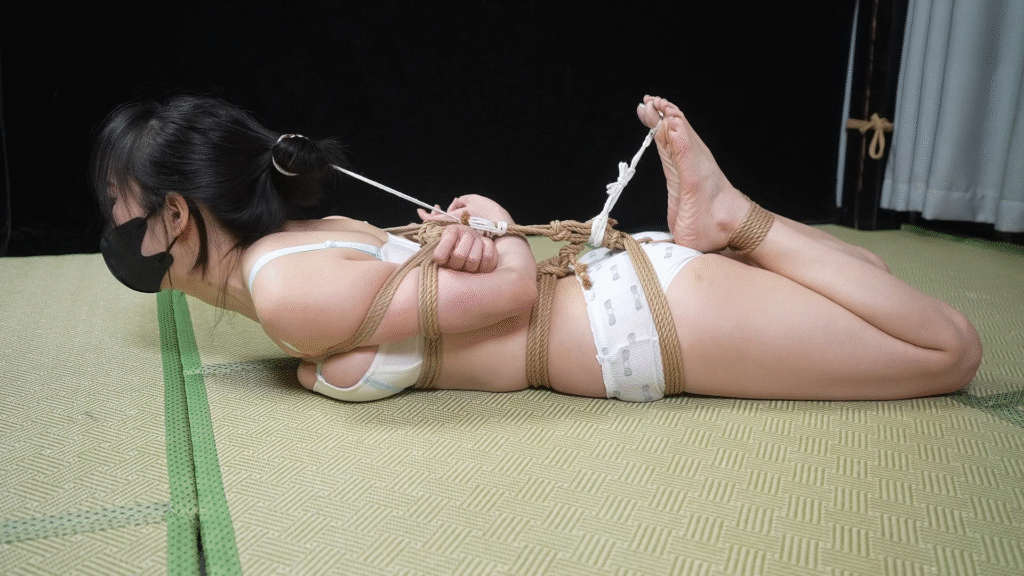
Bondage can be as simple as a silk scarf or as complex as full suspension. Somewhere in the middle sits the hogtie—a foundational rope bondage position that’s both restrictive and intimate. While often seen in photos or videos, it’s a practical and popular choice for bedroom play that creates a deep sense of surrender and control.
This beginner’s guide breaks down the essentials of hogtie bondage: what it is, how to do it safely, how it feels, and how to incorporate it into your play with care and confidence.
What Is Hogtie Bondage?
Hogtie bondage is a form of restraint where the submissive’s wrists and ankles are tied behind the body, typically connected together so they can’t move independently. It’s usually performed with the person lying on their front (prone), making it impossible to roll over or escape the position without help.
This creates:
- A compact, immobile posture
- A strong visual of helplessness
- A deep power exchange dynamic between the top (the person tying) and the bottom (the person being tied)
While the term originates from livestock handling, in BDSM it represents a consensual and controlled form of restraint designed to enhance vulnerability and focus during scenes.
Why Try Hogtie Bondage?
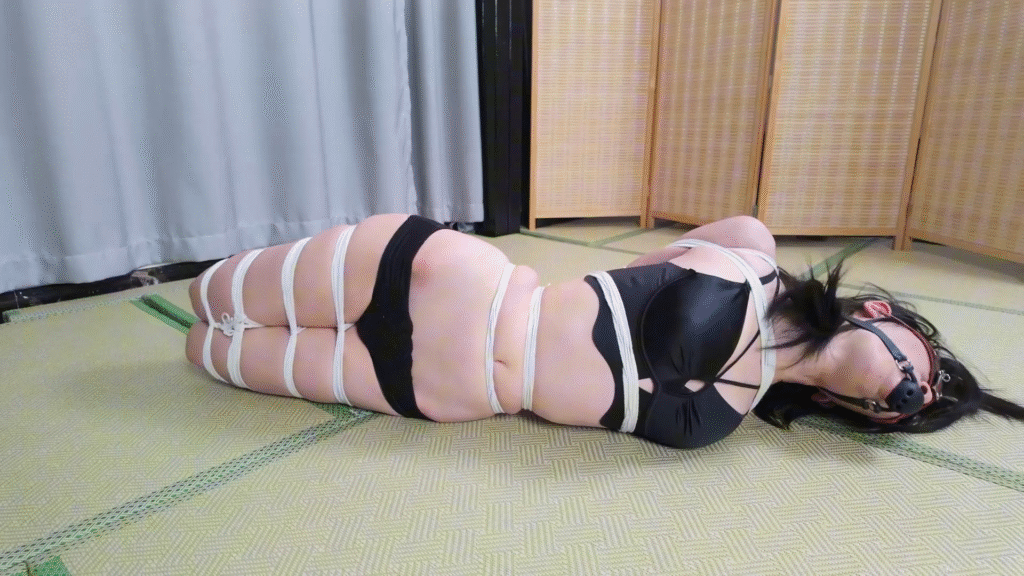
Hogties aren’t just about looking dramatic—they offer specific physical and emotional benefits for both partners.
For the rope bottom:
- Deep feeling of surrender and helplessness
- Physical immobility that heightens trust
- Exposure of the body for sensual or disciplinary play
For the rope top:
- Total control over the bottom’s movement and position
- Opportunities for teasing, sensation play, or domination
- Visually striking scene for performance or photography
Many couples use hogtie as a way to explore light bondage with a high intensity payoff, without needing suspension or advanced skills.
Common Variations of the Hogtie Position
- Basic Floor Hogtie: Wrists and ankles tied, then connected behind the back
- Frogtie-Hogtie Hybrid: Legs bent at the knee in a frog position before being hogtied
- Reverse Hogtie (Face-Up): The submissive lies on their back with limbs pulled underneath
- Elbow-Intensive Hogtie: Wrists and elbows are both pulled tight for maximum restraint (requires high flexibility and experience)
Choose the variation that suits your partner’s comfort, body type, and experience level. Never force a position that causes pain or joint stress.
How to Tie a Basic Hogtie
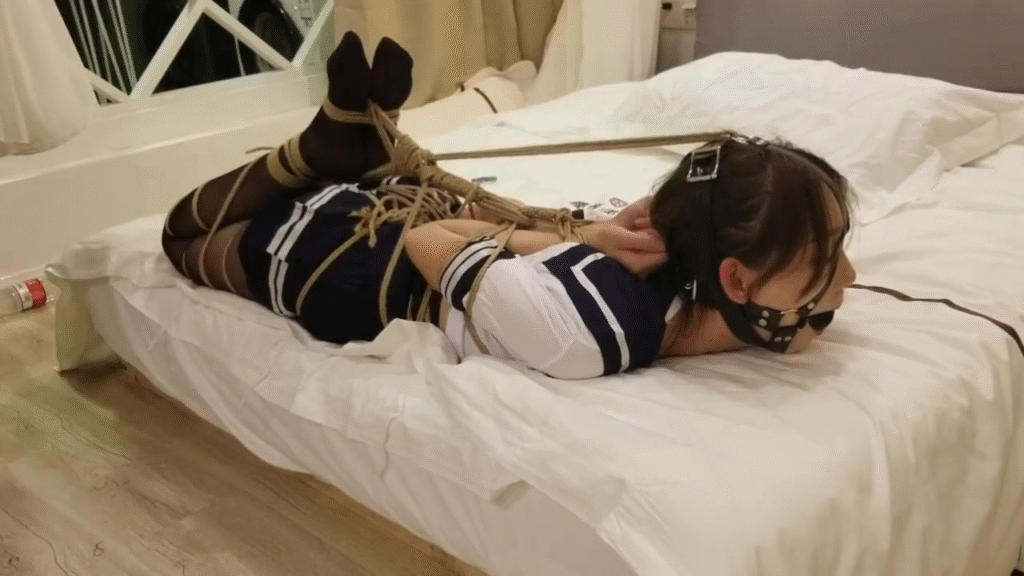
What you’ll need:
- 2 long ropes (6–8 metres each, ideally jute or soft cotton)
- Safety shears
- A soft surface to lie on (yoga mat, bed, futon)
Step-by-step:
- Tie the wrists behind the back using a two-column tie or cuff-style loop.
- Tie the ankles together.
- Connect the wrists and ankles using a third rope or the tails of the first two ropes.
- Adjust the tension to create a comfortable arch—avoid pulling too tight or forcing the body into strain.
- Check in and monitor for circulation, breath, and joint pressure.
Important: The wrists and ankles should be secure but not cutting into the skin. You should be able to slip one finger between rope and skin.
Safety Considerations
Before you start, agree on limits, signals, and aftercare expectations. Hogtie bondage can create physical and emotional intensity, so prepare accordingly.
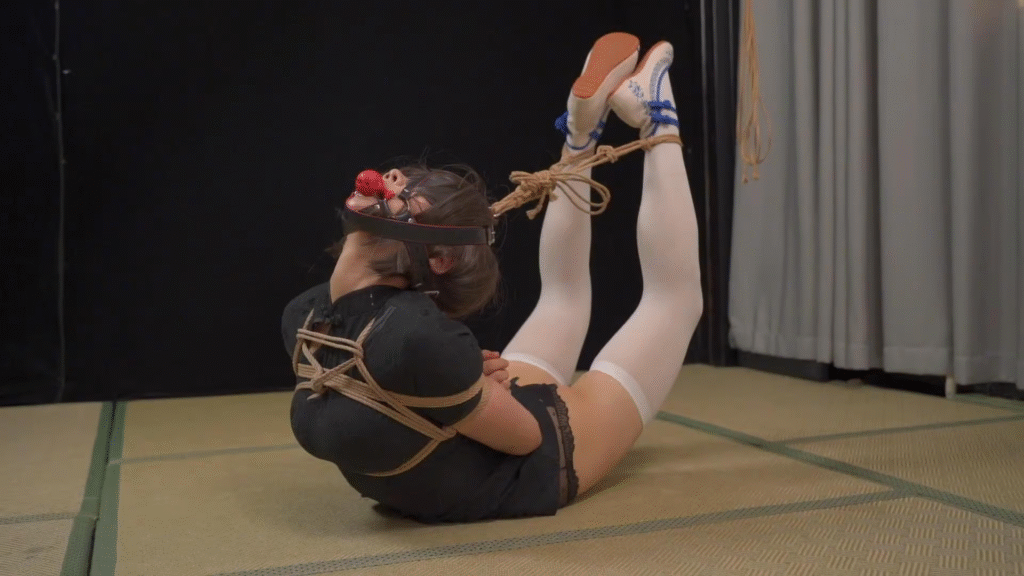
Checklist for safer hogtie play:
- Discuss scene length and safewords
- Always have safety shears within arm’s reach
- Check hands and feet for warmth, color, and sensation
- Avoid overextending shoulders or hyperflexing joints
- Set a timer (10–15 minutes max for beginners)
- Don’t leave the bottom alone while tied
If your partner experiences numbness, pain, or panic—stop the scene and untie immediately.
How It Feels to Be Hogtied
Melissa, 28 (anonymous rope bottom):
“At first it was just strange—not being able to move my arms or legs. But after a few minutes, I felt a huge wave of calm. I stopped thinking and just focused on what he was doing to me. It was intense and very grounding.”
Shawn, 35 (anonymous rope top):
“Once someone trusts you enough to be hogtied, it’s a really powerful responsibility. You’re literally holding their physical and emotional safety. That makes the scene even more meaningful.”
The emotional experience can range from erotic and meditative to vulnerable and cathartic. This is why communication before, during, and after is essential.
Psychological and Emotional Aspects
Hogtie bondage isn’t just about the rope. It’s also about:
- Trust and surrender
- Power exchange
- Sensory vulnerability
The restriction of movement often brings the bottom into a calm or “subspace” state. For tops, the act of methodically tying and controlling the scene can induce a focused, responsible dominance.
Be sure to leave time for decompression afterward, especially after the first few scenes.
Aftercare Tips
Aftercare helps transition out of the intense physical and psychological state created by bondage.
Here’s what aftercare may include:
- Gently untying, massaging joints, and helping the bottom sit up slowly
- Providing water or a blanket
- Cuddling or gentle reassurance
- Discussing how the scene felt emotionally and physically
Different partners need different forms of aftercare. Always ask what works best for each individual.
Common Mistakes to Avoid
- Pulling wrists too close to ankles: This can cause lower back strain or shoulder injury.
- Neglecting to monitor circulation: Numb hands or cold fingers mean you need to untie immediately.
- Leaving someone alone in a hogtie: This is dangerous and should never happen.
- Skipping communication or aftercare: The physical restraint is only part of the scene—emotional care matters just as much.
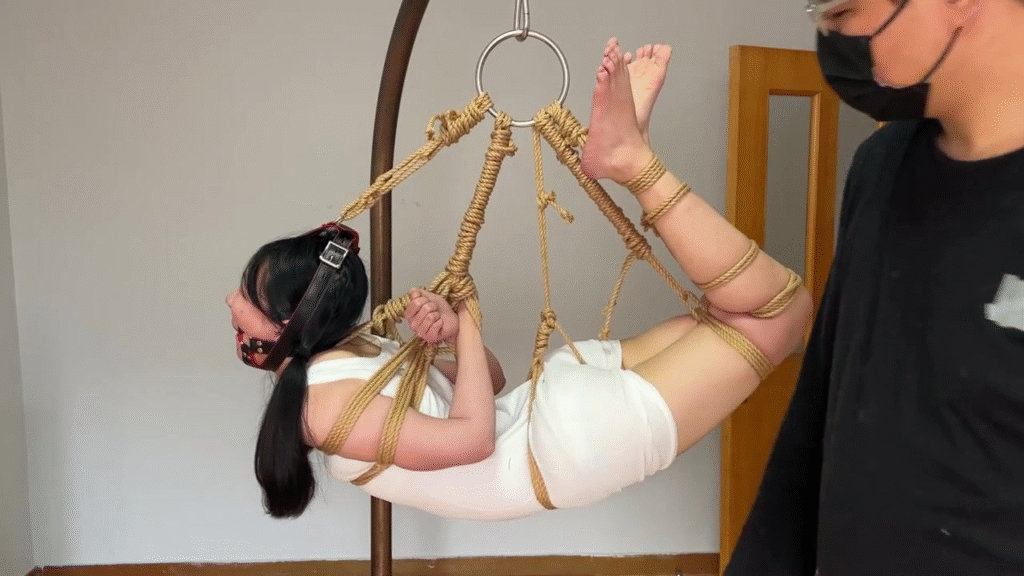
FAQs
Is hogtie bondage safe for beginners?
Yes, with proper precautions and open communication. Start gently and don’t over-tighten or overextend.
Do I need to use rope?
Rope is traditional, but bondage tape, cuffs, or silk ties can be used as alternatives—especially when just starting out.
How long can someone safely stay hogtied?
Begin with short sessions (5–10 minutes). More experienced bottoms may go longer, but the position becomes uncomfortable quickly without movement or support.
Final Thoughts
Hogtie bondage is a classic restraint technique that offers beginners a direct and powerful way to explore control, submission, and intimacy. When done with intention, skill, and care, it’s more than just a physical tie — it becomes a shared experience of trust, connection, and arousal.
Join our free lifetime membership to access free lifetime bondage content, exclusive tutorials, behind-the-scenes rope photosets, and more real stories from Singapore’s rope-loving community.



